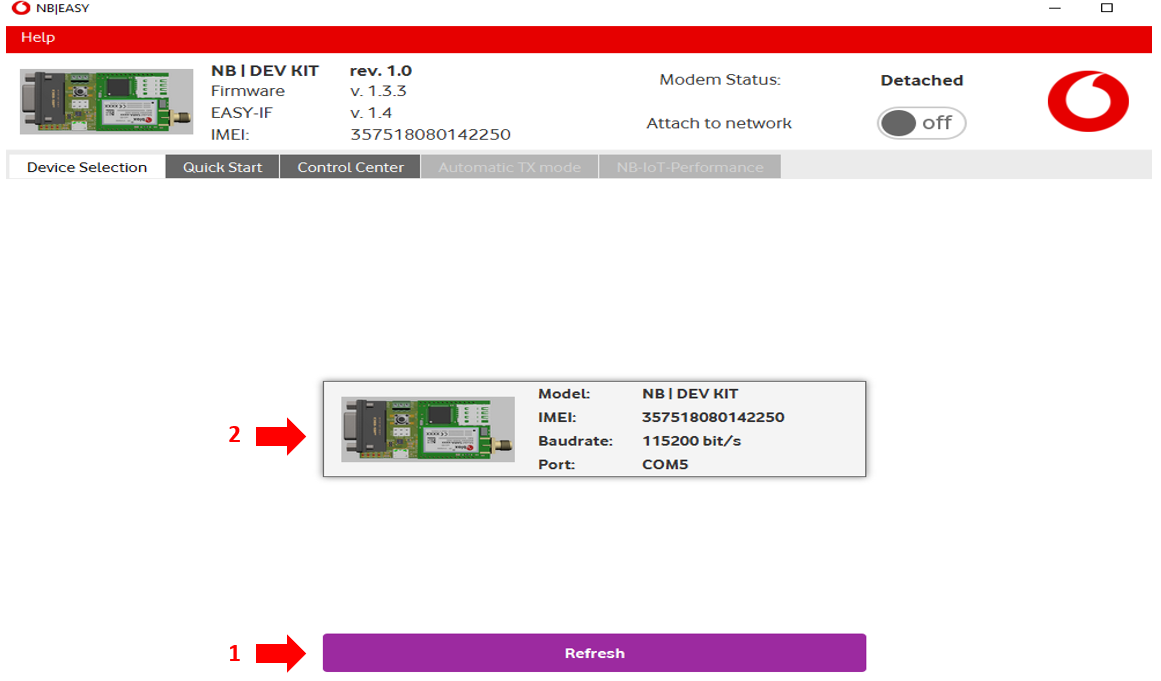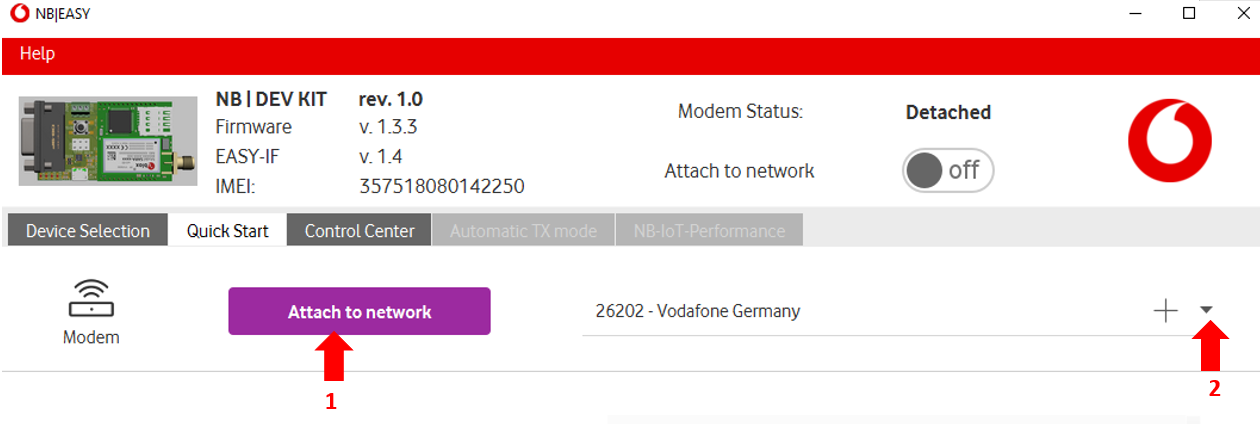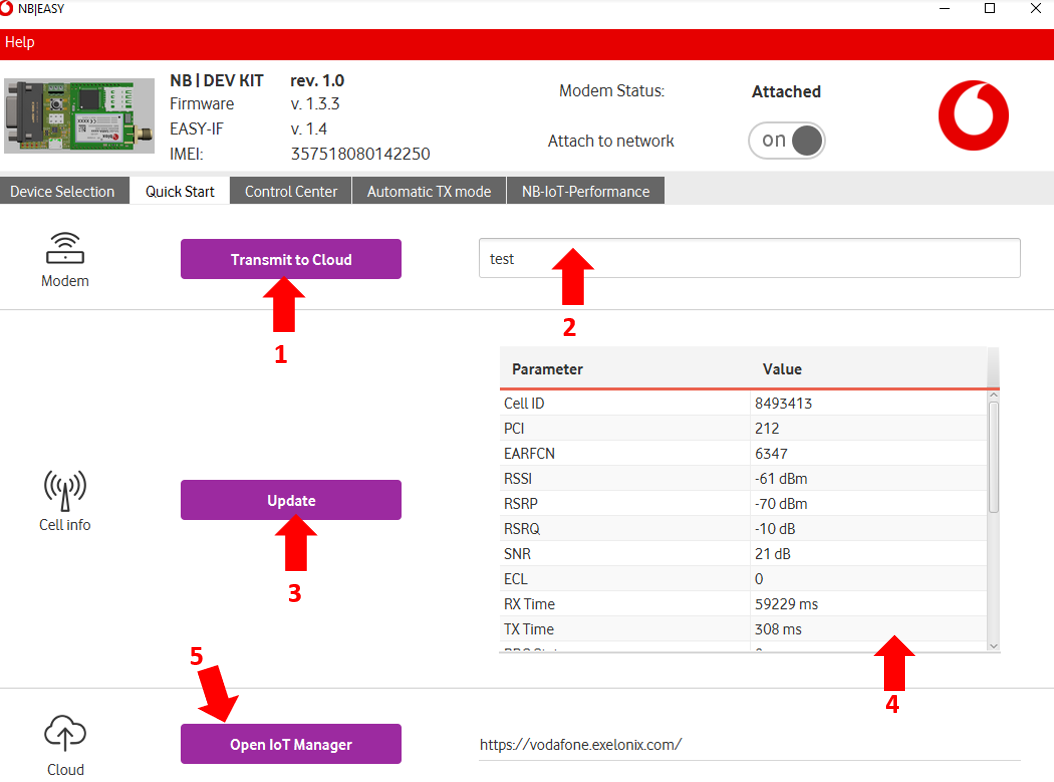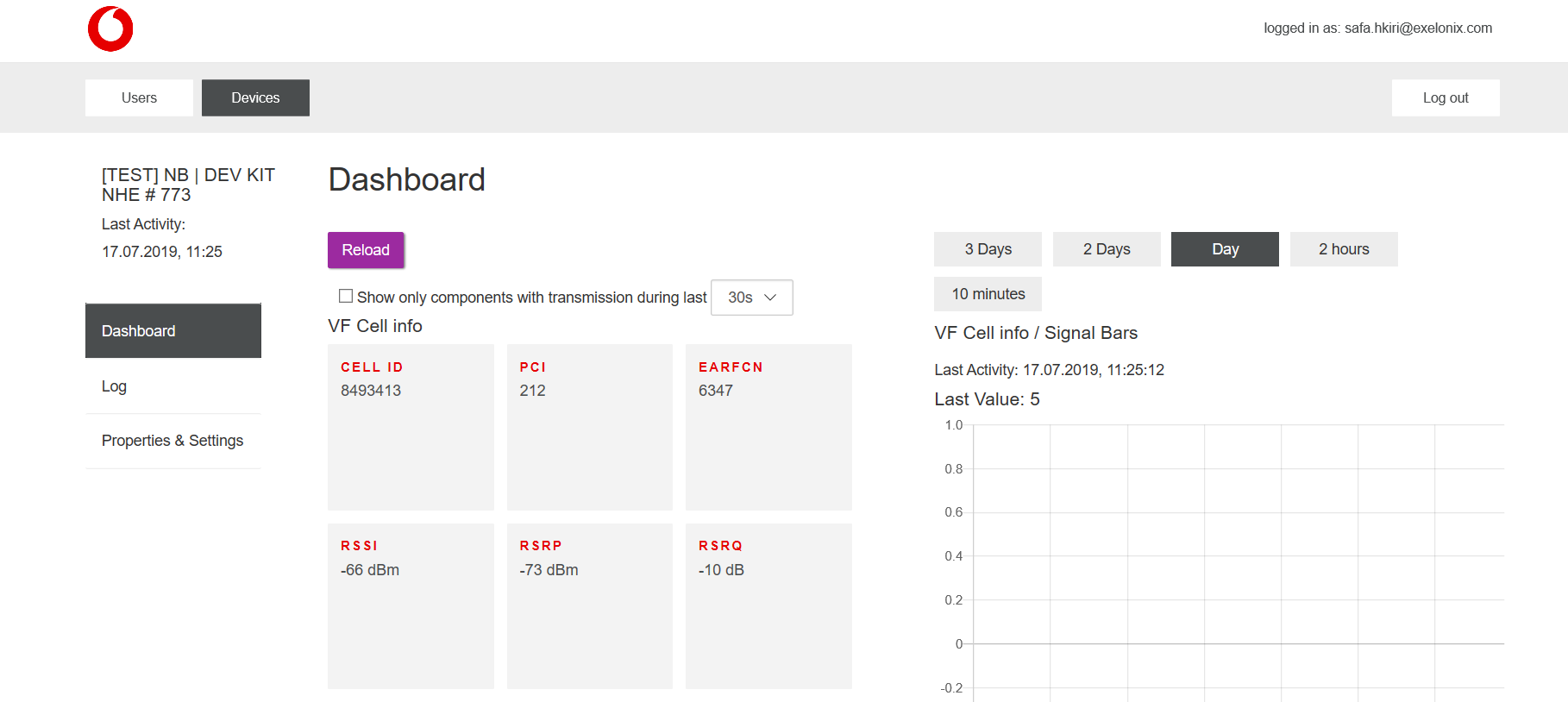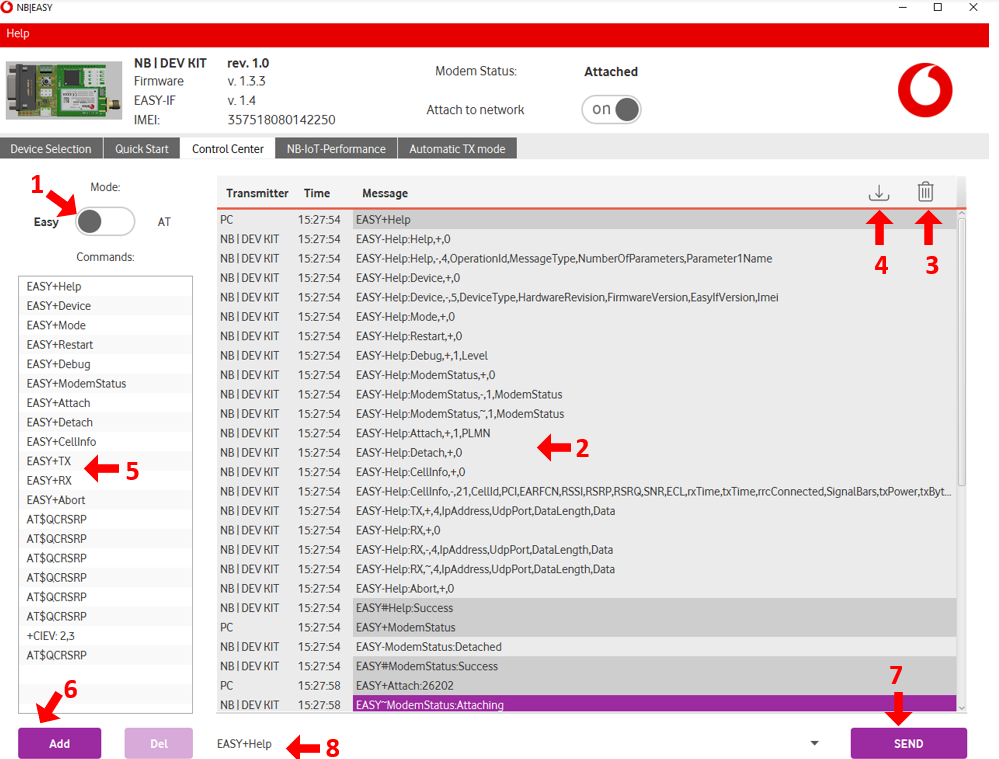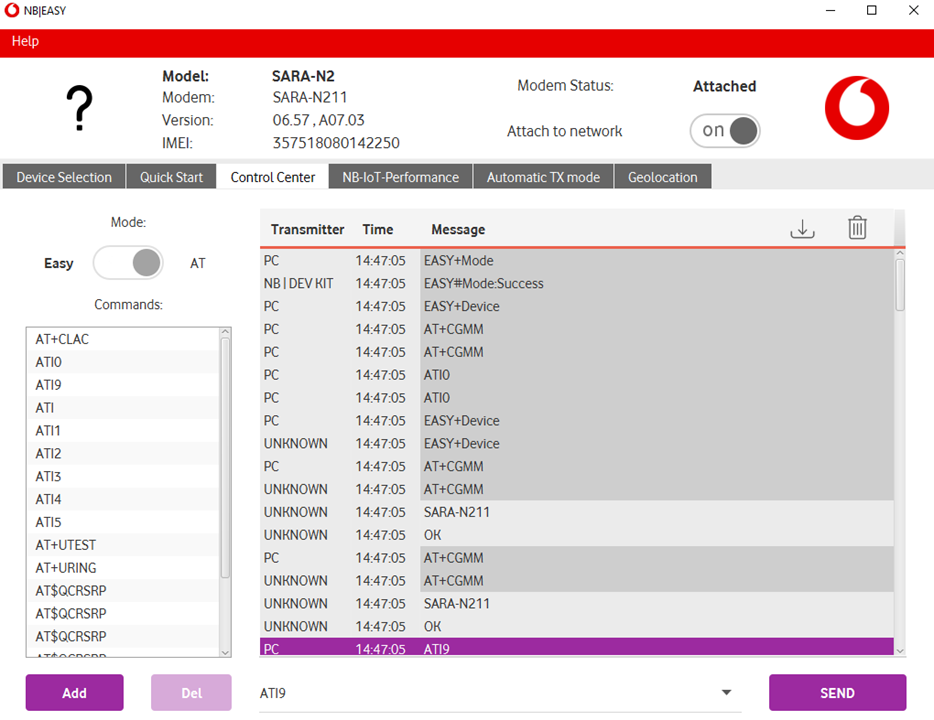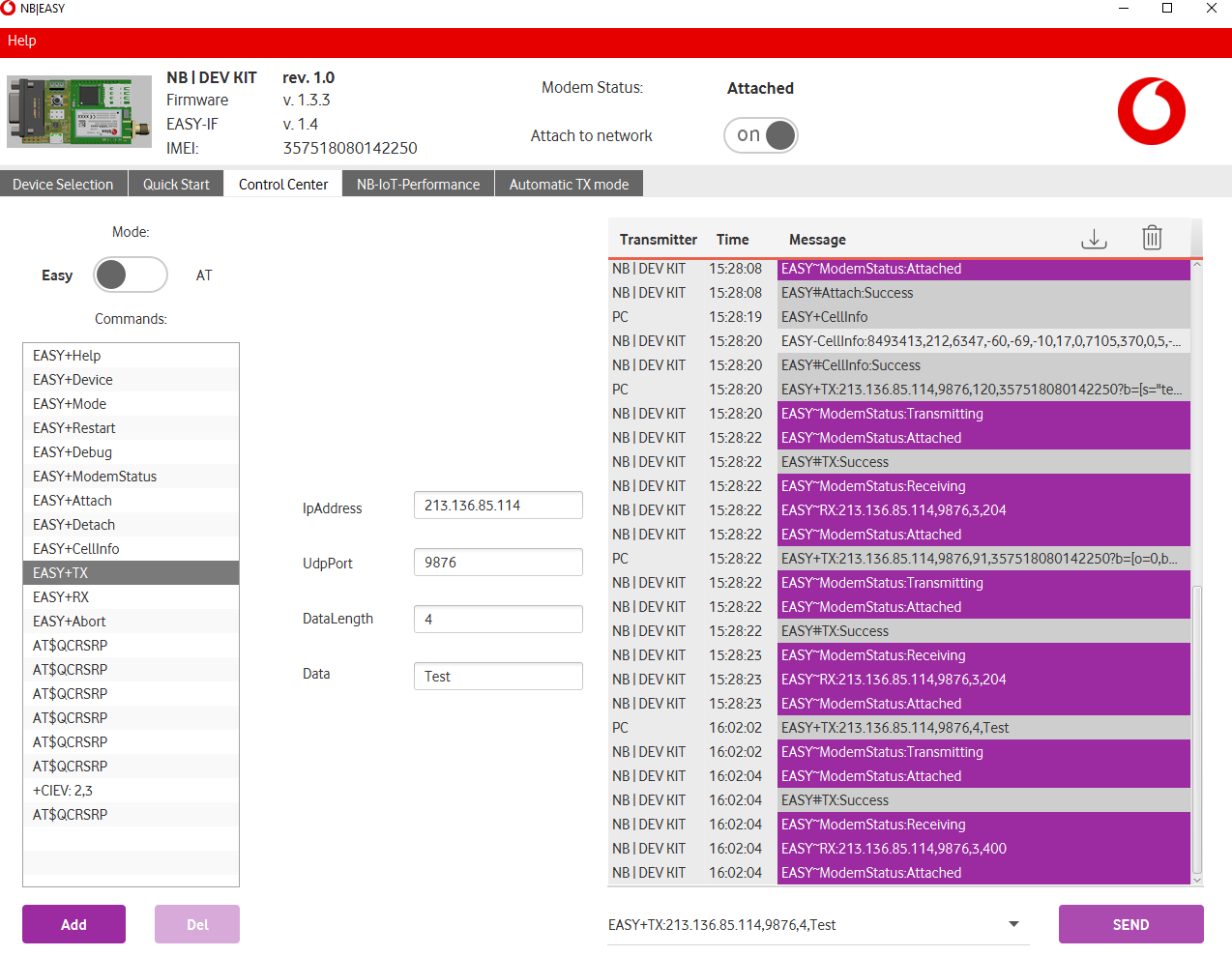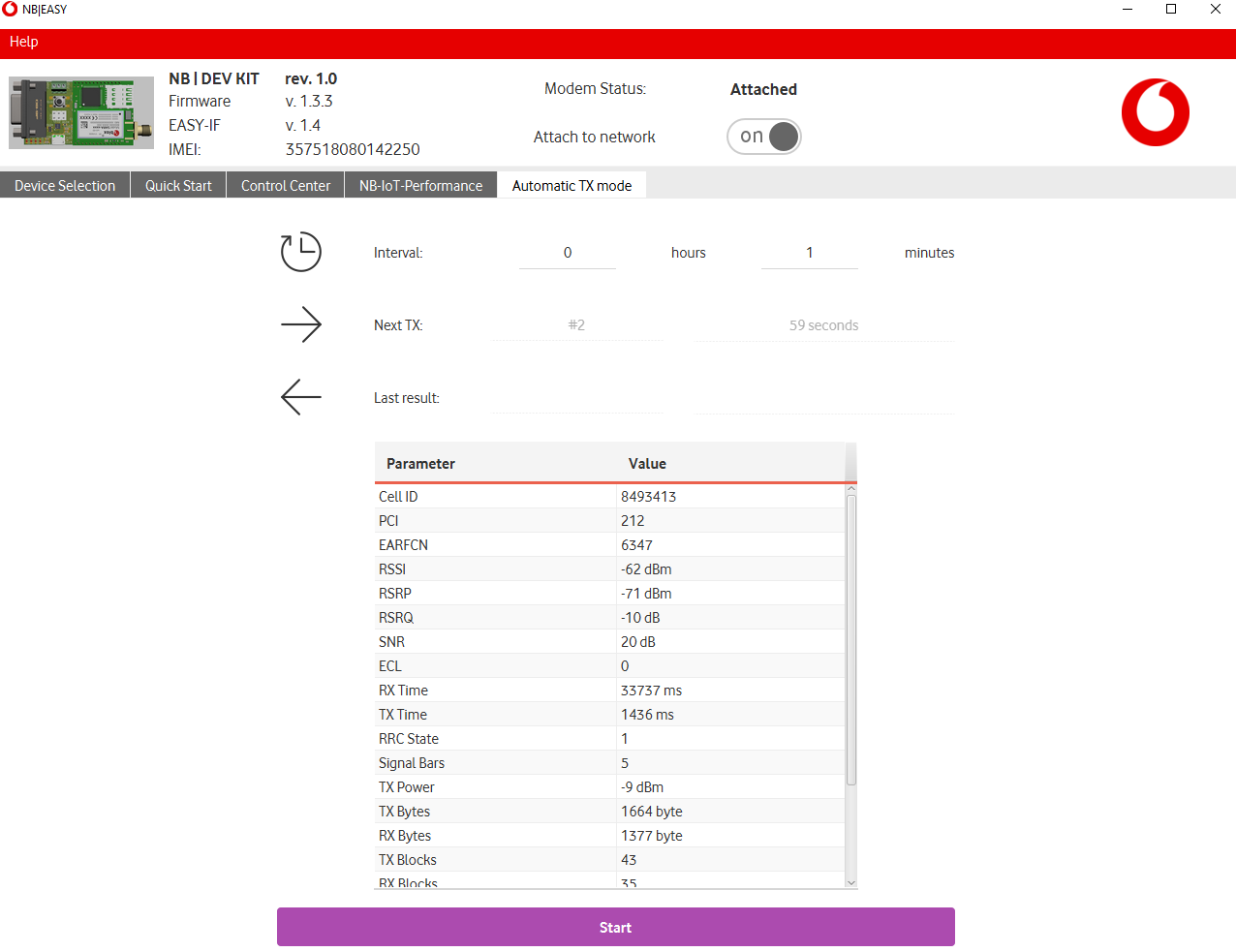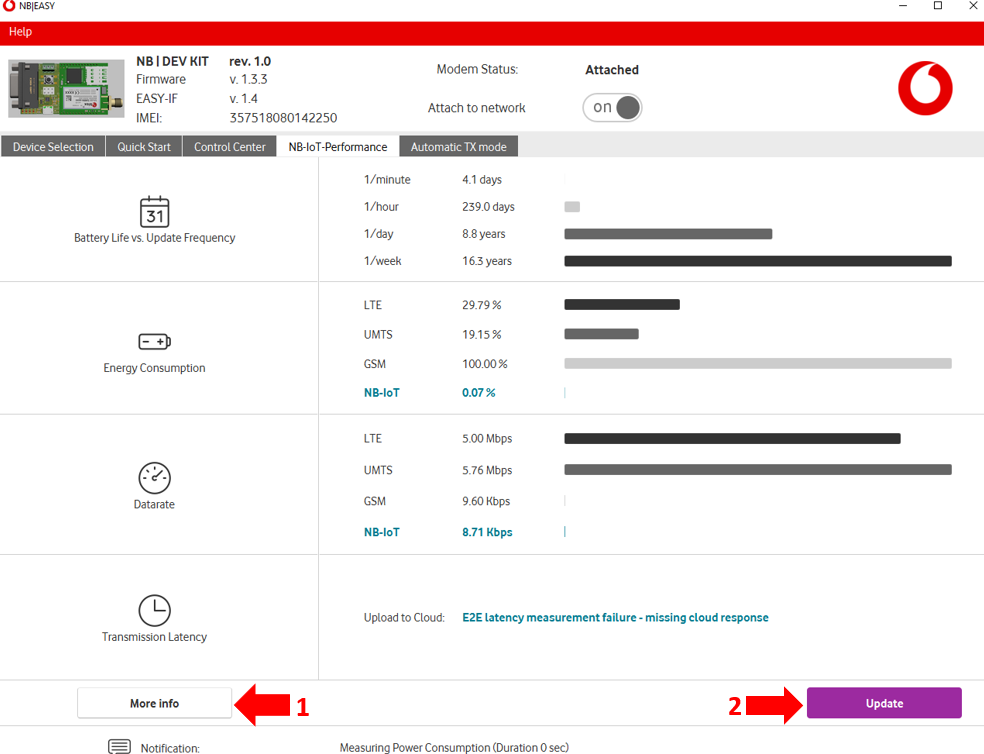Copy of Introduction
NB|EASY is a software tool developed to use Vodafone NB devices via a PC.The NB device, connected via USB to the PC, can be triggered to attach to the Vodafone NB-IoT network.
After the connection is successfully done, the device is able to transmit and collect data via the NB-IoT network.
The application is split into five main parts. Each can be selected by clicking on the corresponding tab. The following sections describe these tabs.
Content
Version History
The following table shows the changes done with every NB | EASY version:
VersionDateChanges1.4
- Special version for the vodafone USB connect LPWA device
1.3
- Add installation instructions for SARA R410M devices
1.2
- Add installation instructions
1.1
- Add performance tab description
1.0
- Initial Version
Version | Date | Changes |
|---|---|---|
| 1.4 | Special version for the vodafone USB connect LPWA devic | |
| 1.3 |
| |
| 1.2 |
| |
| 1.1 |
| |
| 1.0 |
|
Software Installation
Basic software requirements
- Java 8 runtime environment.
- NB-Vodafone driver (available in NB|EASY installation package, or as a stand alone version ).
Windows
- Use the windows executable from the Software & Drivers for Vodafone LPWA Products to install NB | EASY software.
- The installer will take care of installing the Java environment and the required drivers.
- Start the program via the desktop shortcut or start menu entry.
Linux
- The required UART driver has been distributed as part of the Linux kernel since v4.4.132.
- Check whether the required kernel module is loaded:
lsmod | grep option. - Check whether you have read/write access to the USB-UART bridge:
ls -la /dev/ttyUSB*.
Device Selection
After starting the application, the Device Selection tab is shown first. Here the to be controlled NB device can be selected.
- The Refresh button starts a new search of connected NB devices via COM port5. An ongoing search is indicated by a moving progress bar below the button.
- After the search is finished all available device are displayed. By clicking on the NB|DEV KIT, it will be selected for usage. After that the Quick Start tab is shown.
Quick Start
The Quick Start tab presents a simplified way to get familiar with the connected NB device and the NB-IoT network.
Here the device can be triggered to attach to the NB-IoT network and transmit sample data to the cloud.
Figure 2 : Quick start tab
Device State
- Device name and its parameters
- Name of selected NB device and its hardware revision
- Firmware version installed on the NB device
- EASY interface version used by the NB device EASY interface
- IMEI: International mobile equipment identity.
- Modem Status: shows the current status of the device.
- Attach to network: triggers an Attach or Detach of the device depending on the modem status
Modem Status
The modem status indicates the following states:
Modem Status | Description |
|---|---|
PowerOff | The modem is not power on. |
| PoweringUp | The modem is currently powering on. |
| PoweringDown | The modem is currently powering down. |
| Detached | The modem is powered on but not attachted to the network. |
| Attaching | The modem is currently trying to attach to the network. |
| Attached | The modem is attached to the NB-IoT network |
| Detaching | The modem is currently detaching from the network. |
| Transmitting | The modem is transmitting data. |
| Receiving | The modem is receiving data from the network. |
Figure 4: Modem status description
Detached
In the detached state the device is not yet able to transmit data via the NB-IoT network. First an attach procedure needs to be triggered.
- Button to start the attachment procedure to the selected NB-IoT network.
- Drop down menu to select the NB-IoT network to attach to.
Note: Be aware that the inserted SIM card must correspond to the selected network, otherwise the attach procedure will fail.
Attached
In the attached state the device is now able to transmit data via the NB-IoT network.
- Button to start a transmission to the cloud of the entered text ( 2 in figure 6) as well as the current cell information.
- Text field to enter example text to be transmitted when button (1 in figure 6) is pressed.
- Button to start a cell information update.
- List which shows all received cell information of the last successful cell information update (see Displayed parameters in figure 8 below).
- Button to open IoT Manager website to view all successfully transmitted values as described in figure 7.
Figure 7 : IoT Manager web site
| Parameter | Value | Acceptable range |
|---|---|---|
| Cell ID 8199650.. | 8493413 | (228 − 1) i |
| PCI | 212 | - |
| EARFCN | 6374 | 0..65535 |
RSSI | -61 dBm | -113 dBm..-51dBm |
| RSRP | -70 dBm | -140dBm..44dBm |
| RSRQ | -10 dB | -3dB..-19.5 dB |
| SNR | 21 dB | >= 25 dB |
| ECL | 0 | 0..2 |
| TX Time | 308 ms | |
| RX Time | 59229 ms | |
| RRC state | 0 | |
| Signal bars | 5 | 4..5 |
| TX power | -11 dB | -40 dB..+23 dB |
| TX Bytes | 235 bytes | |
| RX Bytes | 238 bytes | |
| TX Blocks | 11 | |
| RX Blocks | 10 | |
| RLC UL Rate | 1558 b/s | |
| RLC DL Rate | 500 b/s | |
| MAC UL Rate | 6800 b/s | |
| MAC DL Rate | 5760 b/s |
Tab 1: Displayed network parameters
Control Center
The control center is a more advanced and detailed view of how the NB|EASY tool communicates with the NB device.
Here the user can compose a message and send it to the device.The incoming messages are also monitored.
The NB|DEV KIT supports both the EASY interface and the AT commands mode .The user can switch from the EASY interface to the AT commands mode .(figure 10 below)
Once switched to the AT commands , the device cannot switch back to the EASY mode to do it , you need to unplug the device and restart the connection .
- Switch between "AT" and "Easy" mode.
- Message send by the device or the host.
- Button to empty the list view (2 in figure 9)
- The complete communication log history is recorded and can be saved in a text file.
- List of AT commands
- Select a single AT command to be sent to the device. The message string will be copied to message text field (8 in figure 9 ) .
- Button to start sending of the AT command (8 in figure 9) to the device.
- Message text field. The message to be sent to the device can be edited further.
Figure 10 : AT Command mode
Change Endpoint
Devices send data to the Vodafone backend by default. If you want your devices to send data to another backend, you can change the IP destination address.
Switch to Control Center and select EASY+TX from the right list of commands and fill in IP and Port of the backend you want to send data to. Add the payload to the Data field and adjust the DataLength field.
The default IP address of Vodafone is 213.136.85.114 and the Port is 9876.
Automatic TX mode
This tab allows to set automatic data transmission events. The event interval period is configurable.
The transmission status is displayed as detailed in the Tab 1 and the sent data can be verified on the cloud.(see figure 7 above )
Figure 12 : Automatic TX mode
NB-IoT Performance
The NB-IoT Performance tab compares the NB-IoT RAT (Radio Access Technology) with other common RATs like LTE Cat1, UMTS and GSM used for transmitting small amount of data.
To acces the NB-IoT Performance tab the device needs to be attached to the NB-Iot network first, othrewise the tab is disabled.
The tool uses live data from the NB-IoT network to calculate the expected battery lifetime, energy consumption and datarate.
- Button to start the NB-IoT performance calculation.
The application sends real test data to the Cloud via NB-IoT to be able to record the needed time and energy consumption in the current NB-IoT cell. - Button to get more information about the performance calculation and its assumptions in more detail. Performance Tab
Figure 13 : NB-IoT performance
Abbreviations
Abbreviation | Description |
|---|---|
| NB-IoT | Mobile communication standard "Narrowband Internet-of-Things" |
| NB | Short version of "NB-IoT" |
| RAT | Radio Access Technology |
| PCI | Physical Cell Identidy |
| EARFCN | E-UTRA Absolute Radio Frequency Channel Number |
| RSSI | Received Signal Strength Indicator |
| RSRQ | Reference Signal Received Quality |
| SNR | Signal to noise ratio |
| ECL | Enhancement coverage level |
| RRC state | Radio Ressource Control |
| RLC UL Rate | Radio Link Control Uplink Rate |
| RLC DL Rate | Radio Link Control Downlink Rate |
| MAC UL Rate | Medium Access Control Uplink Rate |
| MAC DL Rate | Medium Access Control Downlink Rate |
